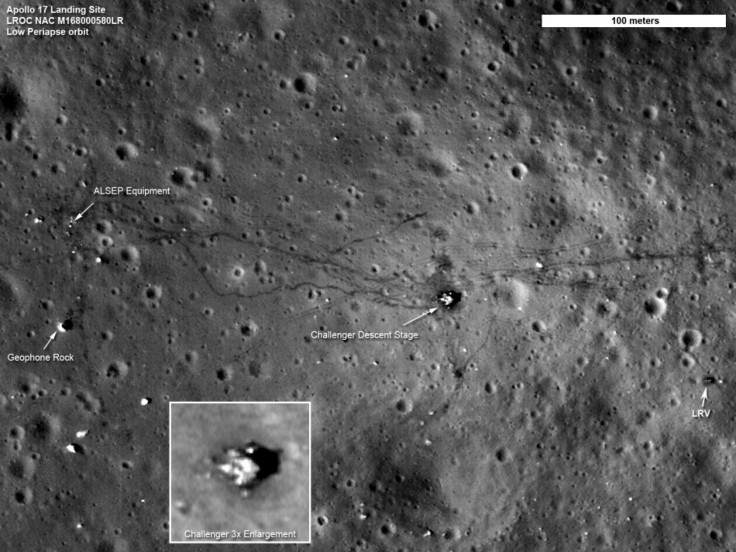NASA’s Lunar Reconnaissance Orbiter Looks Back at the Apollo Missions (VIDEO)

The Lunar Reconnaissance Orbiter has allowed NASA to take a trip down memory lane and recall the Apollo missions on the moon.
The Apollo missions took place from the 1960s to the 1970s and brought man to the moon for the first time. Many consider this the glory days of space travel, when it was of the up most importance because of the rivalry between the U.S. and Russia (Soviet Union). While both the U.S. and Russia have moved on and are now partners in space, NASA is looking back at those glory days through a sharpened eye.
Thanks to the LRO, a spacecraft currently orbiting the moon, NASA has captured the sharpest images ever of the Apollo 12, 14 and 17 landing sites. The images show what the astronauts did while they were on the moon and some of their footsteps.
These images remind us of our fantastic Apollo history and beckon us to continue to move forward in exploration of our solar system, said Jim Green, director of the Planetary Science Division at NASA Headquarters in Washington.
The LRO has taken three images of the three different Apollo sites. All three images show the trails left by the three different Apollo crews. It has been able to capture the tracks laid down by the Apollo 17 rover, the foot trails left by those astronauts and where some scientific instruments were laid down. Also seen are remnants of the Apollo Lunar Surface Experiments Package (ALSEP).
The ALSEP was a part of every Apollo mission. It provided the first insights into the moon's internal structure, measurements of the lunar surface pressure and the composition of its atmosphere.
NASA researchers credit the Narrow Angle Camera, which they say sharpens the view of the moon's surface. Previous cameras were able to get images of the rover tracks, but this one shows the sharp parallel lines on the surface.
The images were also made possible by an adjustment made to LRO's orbit. The researchers made the orbit more elliptical, so the lowest part of the orbit is on the sunlit side of the moon. It lowered the LRO from its usual altitude of approximately 31 miles (50 kilometers) to an altitude that dipped as low as nearly 13 miles (21 kilometers).
Without changing the average altitude, we made the orbit more elliptical, so the lowest part of the orbit is on the sunlit side of the moon, John Keller, deputy LRO project scientist, said. This put LRO in a perfect position to take these new pictures of the surface.
The LRO launched in September of 2009. Last year, after a successful one year mission where it gathered crucial data on the moon's environment that will help for long-term expeditions, LRO turned to scientific research in NASA's Science Mission Directorate.
Credit: NASA
© Copyright IBTimes 2024. All rights reserved.





















